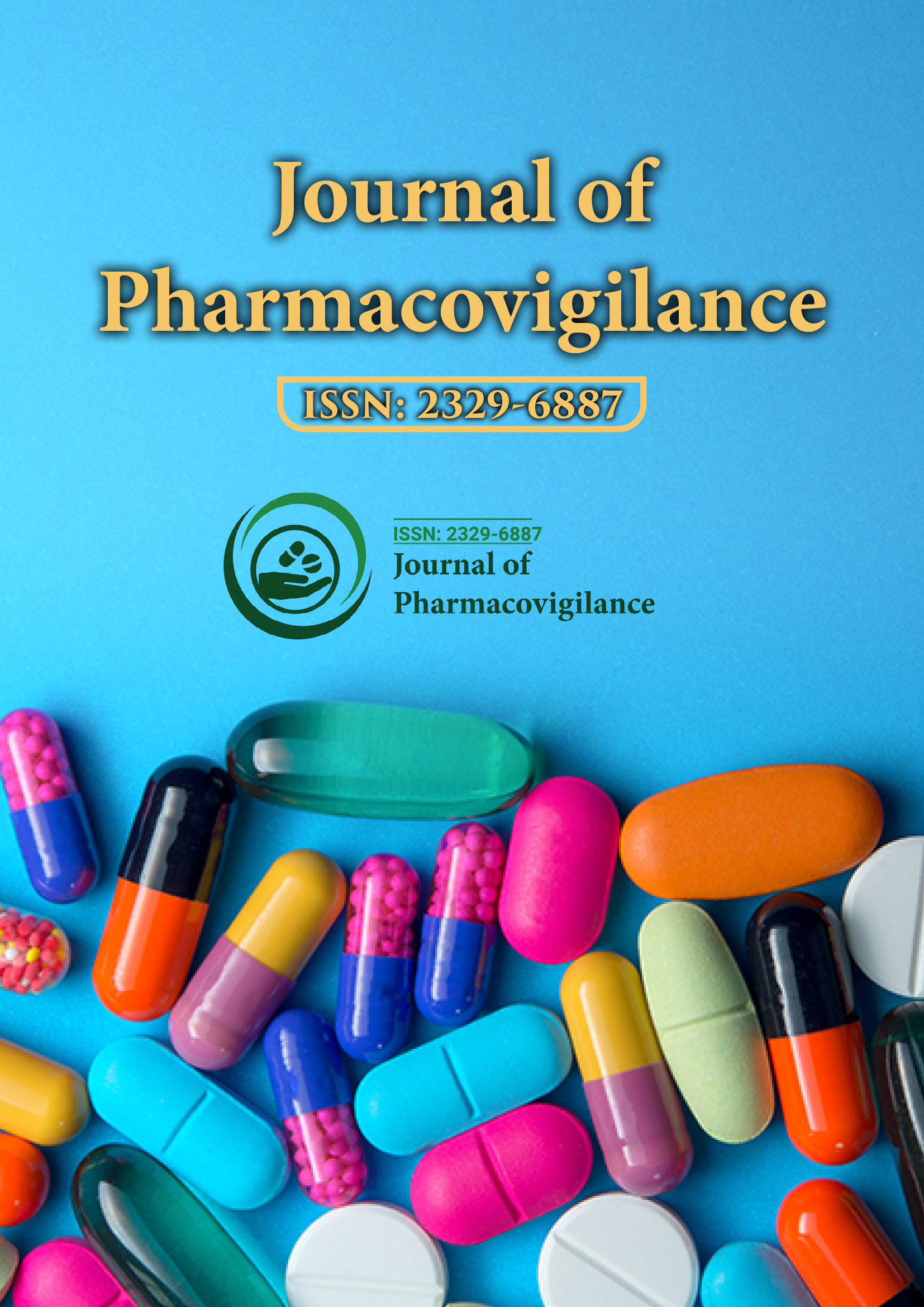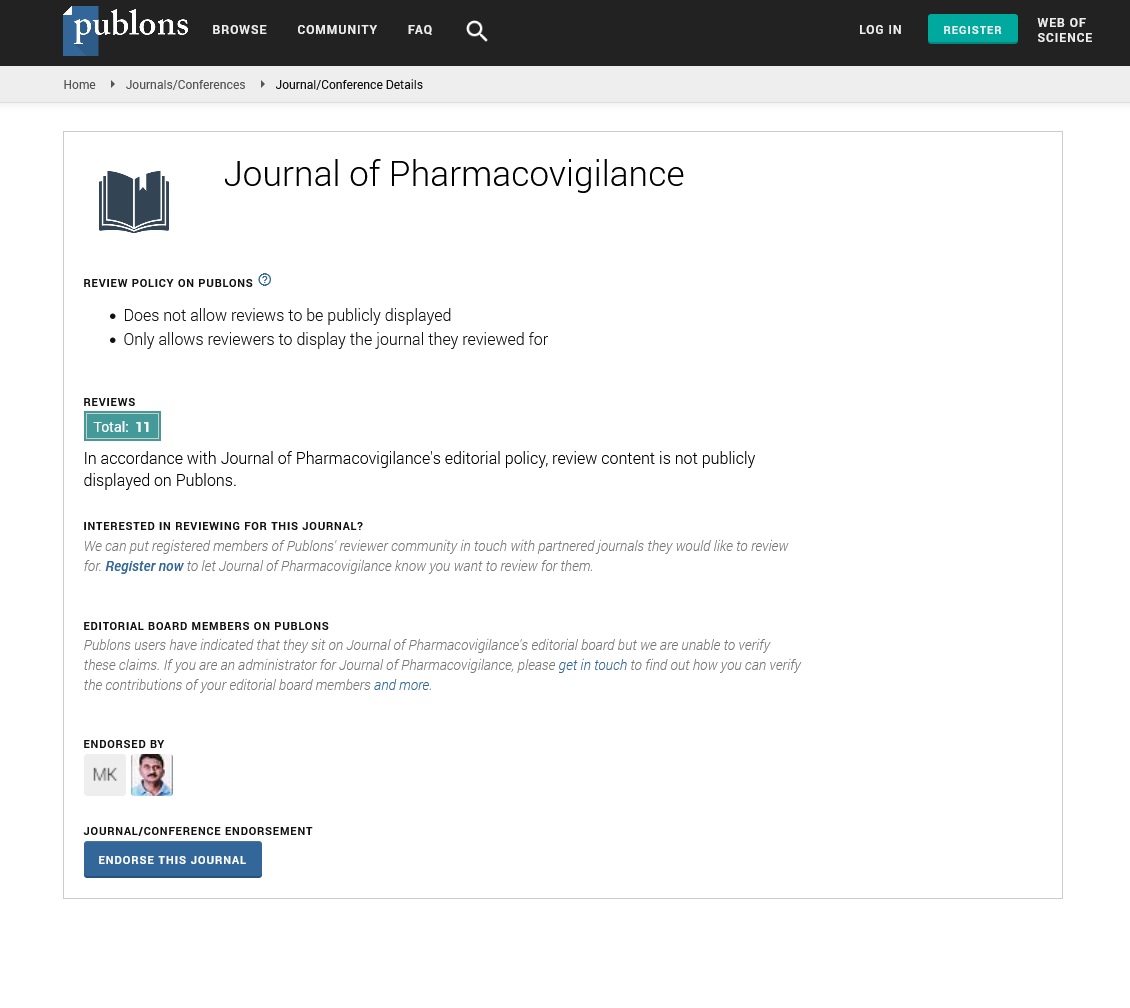Indexed In
- Open J Gate
- JournalTOCs
- The Global Impact Factor (GIF)
- RefSeek
- Hamdard University
- EBSCO A-Z
- OCLC- WorldCat
- Publons
- Euro Pub
- Google Scholar
Useful Links
Share This Page
Journal Flyer

Open Access Journals
- Agri and Aquaculture
- Biochemistry
- Bioinformatics & Systems Biology
- Business & Management
- Chemistry
- Clinical Sciences
- Engineering
- Food & Nutrition
- General Science
- Genetics & Molecular Biology
- Immunology & Microbiology
- Medical Sciences
- Neuroscience & Psychology
- Nursing & Health Care
- Pharmaceutical Sciences
Perspective - (2024) Volume 12, Issue 1
Enhancing Pharmacovigilance for Immuno-Oncology Drugs: Addressing Unique Safety Concerns
Zhiming Jiang*Received: 29-Feb-2024, Manuscript No. JP-24-25632; Editor assigned: 01-Mar-2024, Pre QC No. JP-24-25632(PQ); Reviewed: 15-Mar-2024, QC No. JP-24-25632; Revised: 22-Mar-2024, Manuscript No. JP-24-25632(R); Published: 29-Mar-2024, DOI: 10.35248/2329-6887.24.12.469
About the Study
The emergence of Immuno-Oncology (IO) drugs has revolutionized cancer treatment by controlling the body's immune system to combat tumors. These innovative therapies hold immense promise for patients with previously untreatable malignancies. However, this therapeutic revolution comes handin- hand with a unique set of safety concerns that demand a strong and adaptable Pharmacovigilance (PV) system.
Conventional PV primarily relies on spontaneous reporting systems for capturing Adverse Events (AEs). These systems have inherent limitations, including underreporting, delayed reporting, and difficulties establishing causality. For IO drugs, these challenges are further amplified due to the nature of their mechanism of action.
Immune-related Adverse Events (irAEs): Unlike conventional cytotoxic drugs that directly target cancer cells and often produce immediate side effects, IO drugs can trigger a spectrum of irAEs. These irAEs can affect various organs and mimic pre-existing conditions, making recognition and differentiation from disease progression or co-morbidities a significant challenge. Furthermore, the diverse clinical presentations of irAEs necessitate specific reporting criteria to ensure comprehensive capture.
In contrast to conventional therapies, irAEs can manifest weeks or even months after treatment initiation, further complicating the assessment of causality. This delayed onset necessitates extended follow-up periods and proactive monitoring strategies within the PV framework.
The field of IO often utilizes combination therapies or sequential treatment regimens. Disentangling which drug or combination is responsible for a particular AE adds another layer of complexity to the PV process. Traditional reporting systems may not be adequately equipped to capture these intricate interactions.
Building a strong PV system for immuno-oncology
Developing and implementing standardized reporting tools specifically designed for capturing comprehensive information about irAEs is significant. These tools should capture details such as the type of irAE, onset time, severity, response to treatment, and potentially associated medications.
Implementing active surveillance programs, particularly during clinical trials and post-marketing phases, can significantly improve AE detection and reporting rates. These programs could involve regular monitoring with standardized questionnaires or targeted assessments for specific irAEs with a high risk of occurrence.
Leveraging Real-World Data (RWD) from Electronic Health Records (EHRs) and other registries can provide valuable insights into the safety profile of IO drugs in real-world clinical practice. Integrating RWD with controlled clinical trial data strengthens the overall safety profile understanding and allows for identification of potential long-term AEs that may not be readily apparent in controlled settings.
Identifying and validating biomarkers that can predict or diagnose specific irAEs could be a innovation for patient management and risk stratification. Biomarkers could allow for targeted screening and preventative measures, leading to improved patient outcomes.
Empowering patients to recognize and report potential irAEs is a critical component of effective PV. Educational materials and clear communication channels between patients, healthcare providers, and regulatory bodies are essential. Patients play a vital role in identifying and reporting AEs, and encouraging a culture of open communication is key.
Collaboration is key
Developing strong clinical trial designs with long-term follow-up periods and actively participating in post-marketing surveillance programs are significant responsibilities of pharmaceutical companies. This ensures comprehensive data collection for thorough safety assessments.
Adapting existing PV guidelines to accommodate the specificities of IO drugs, including streamlined reporting processes for irAEs, can significantly expedite safety signal detection. Regulatory bodies need to be flexible and adaptable in their approach to PV for IO drugs.
Raising awareness about irAEs, maintaining a high index of suspicion, and actively engaging in reporting suspected events are critical for effective PV. Healthcare providers play a pivotal role in ensuring the safety of patients receiving IO therapies.
Conclusion
Enhancing PV for IO drugs necessitates a multi-pronged approach. By implementing standardized reporting tools, leveraging RWD, encouraging collaboration across stakeholders, and investing in biomarker development, we can ensure the continued development and safe use of these life-saving therapies. As the field of IO continues to evolve, ongoing innovation in PV strategies will be important to safeguarding patient well-being and maximizing the therapeutic potential of these revolutionary treatments.
Citation: Jiang Z (2024) Enhancing Pharmacovigilance for Immuno-Oncology Drugs: Addressing Unique Safety Concerns. J Pharmacovigil. 12:469.
Copyright: © 2024 Jiang Z. This is an open-access article distributed under the terms of the Creative Commons Attribution License, which permits unrestricted use, distribution, and reproduction in any medium, provided the original author and source are credited.

